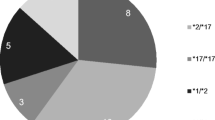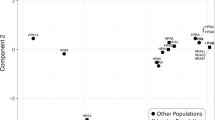Abstract
The genetically inherited polymorphic plasma protein types have always been considered stable for lifetime in humans. Most of these proteins are synthetised in the liver. Phenotypes for 14 plasma proteins in donors and recipients of liver transplants prior to and after transplantation were determined in 15 patients who had undergone liver transplantation at the university hospitals Charité and Rudolf Virchow in Berlin. The plasma proteins investigated were HP, TF, GC, PI, ORM1, ITI, A2HS, PLG, FXIIIB, BF, C3, C6, C8 and FH. Evidence was provided of irreversible change from the recipient type to the donor type in at least one patient for all the systems investigated. This is the first time such data have been obtained for ITI, A2HS, C8 and FH. These results clearly support the point that the dogma of life-long stability of genetically determined protein phenotypes is merely of limited validity. Against the background of good long-term results of liver transplantation, there are consequences for the practice of legal medicine in the particular context of certification of parentage, identification and stain analysis.
Similar content being viewed by others
Author information
Authors and Affiliations
Additional information
Received: 21 November 1997 / Received in revised form: 4 March 1998
Rights and permissions
About this article
Cite this article
Schmeling, A., Correns, A., Staffa, G. et al. Changes in the phenotype of polymorphic plasma proteins after liver transplantation – new data and medico-legal consequences. Int J Leg Med 112, 364–367 (1999). https://doi.org/10.1007/s004140050301
Issue Date:
DOI: https://doi.org/10.1007/s004140050301




